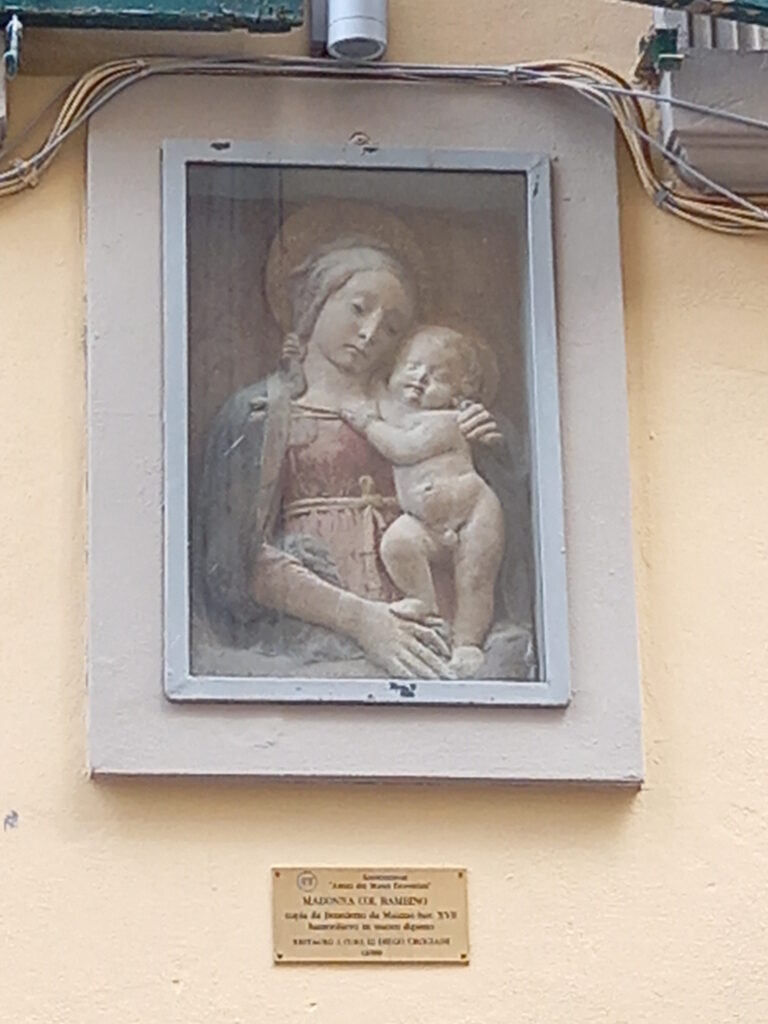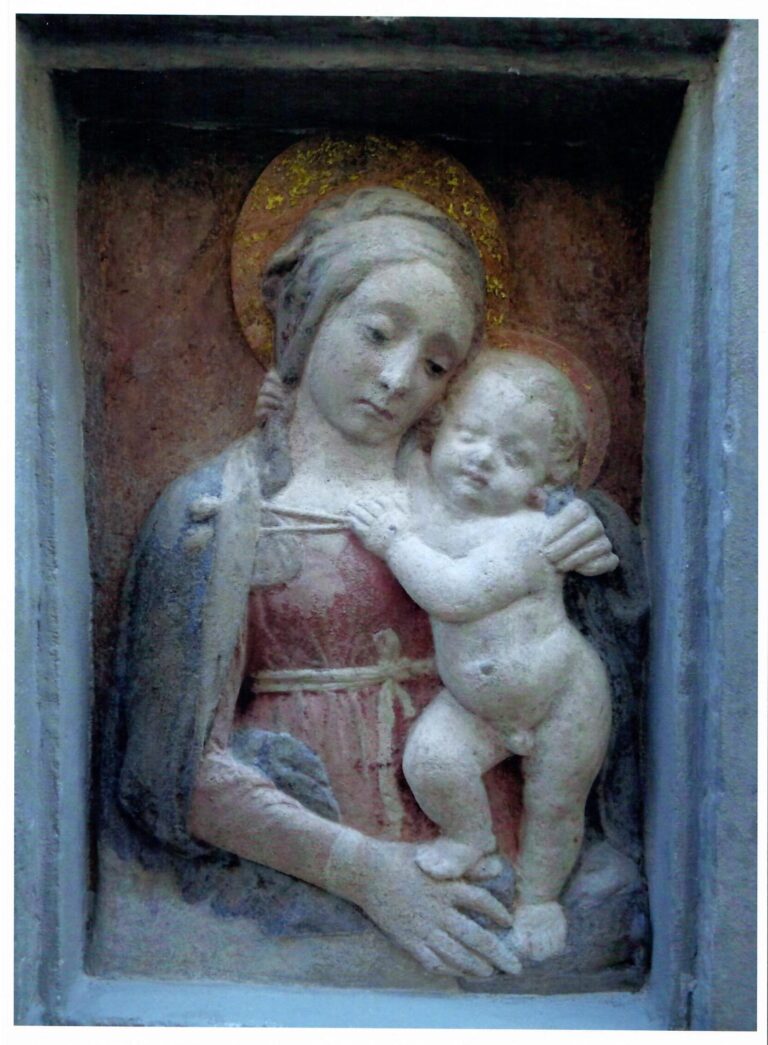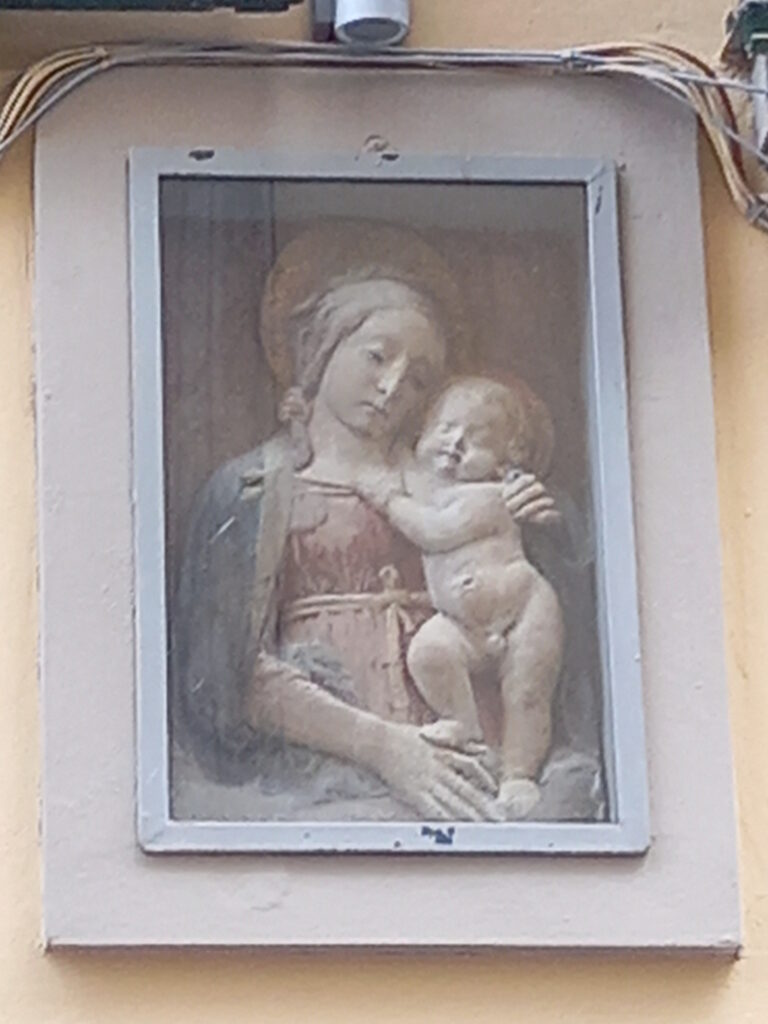via Faenza N. 14
the tabernacles of florence
THE TABERNACLE
Madonna col Bambino
The Virgin Mary is depicted in the act of holding the Child, who, endowed with a certain physicality, clings with one hand to the neckline of the Mother's robe and with the other to her neck; one little foot rests firmly on Mary's arm, and the faces of Mother and Son are tenderly close, in an attitude of sweet intimacy.
Tabernacle
The niche, bordered by a mortar frame, houses inside the painted stucco bas-relief referable to the 16th century. The delicate Marian tabernacle and the original stone coat of arms manage to convey a vivid sense of physical and spiritual renewal and embellish this area of the Florentine historic center.
THE STREET
Via Faenza
This first stretch of street, between Piazza Madonna degli Aldobrandini and Via Nazionale, was once called borgo di Campo Corbolini and gave its name to the "Porta", located in what is now Piazza Madonna degli Aldobrandini, which was part of the 1172 circle of walls. At the end of the 13th century, with the construction of the new circle of walls, the Porta di Campo Corbolini was demolished and the "borgo" changed its name: first it was called Via della Stipa then, from 1870, Via Faenza, including the stretch leading to the Fortress. Here, near the actual Piazza del Crocifisso, was built Porta a Faenza, named after the Vallombrosian nuns, followers of the Beata Umiltà di Faenza (“Blessed Humility of Faenza”), who had their monastery nearby.
AUTHOR
Copy of Benedetto da Maiano
(16th century) The work's author was inspired by Benedetto da Maiano, an excellent Florentine architect and sculptor of the second half of the 15th century who was the author of an identical Madonna and Child now in the National Gallery of Art in Washington and datable to about 1475. The original marble bas-relief, passed from the Bardini collection to Princes of Liechtenstein one, and after being approximated to the manner of Antonio Rossellino, was later definitively attributed to the Maiano-born artist.
The sculptor
(16th century) Various copies of this type of Madonna and Child must have existed and circulated, produced by the workshop of Benedetto da Maiano himself from the 1580s onward: it cannot be ruled out that the copy in Via Faenza may also have come out of that workshop.
Curiosity
Near the house number 14, we find a very interesting coat of arms, representing a "unicum" of absolute importance: it depicts an eagle gazing at the sun and a crosier with a snake wrapped on the shaft. Both the eagle, depicted with its wings lowered and not unfolded, which has the power to look at the sun without being dazzled by it, and the serpent rising from a pharmaceutical container, represent symbols of physical and psychic regeneration. Because of their clear reference to the curative function, scholar Diego Crociani discerns a clear reference to the hospital of S. Giuliano, which was located on via San Niccolò at the time. Claudio Paolini, on the other hand, proposes as a reference the monastery equally named after San Giuliano and located at the end of Via Faenza.
GALLERY

Tabernacle
Via Faenza 14

Madonna col Bambino
Via Faenza 14

Madonna col Bambino
Via Faenza 14



